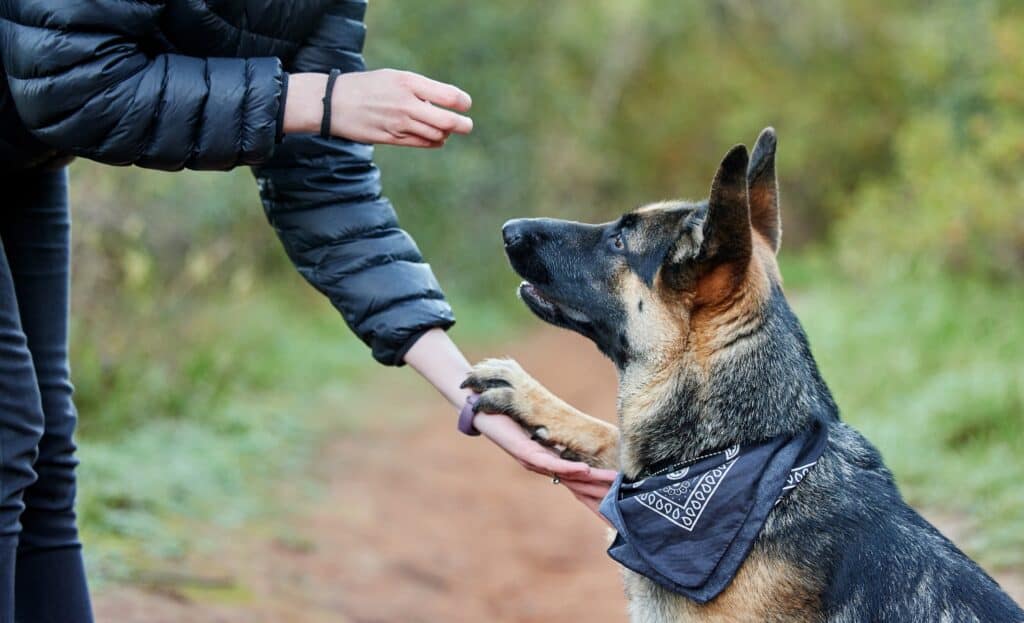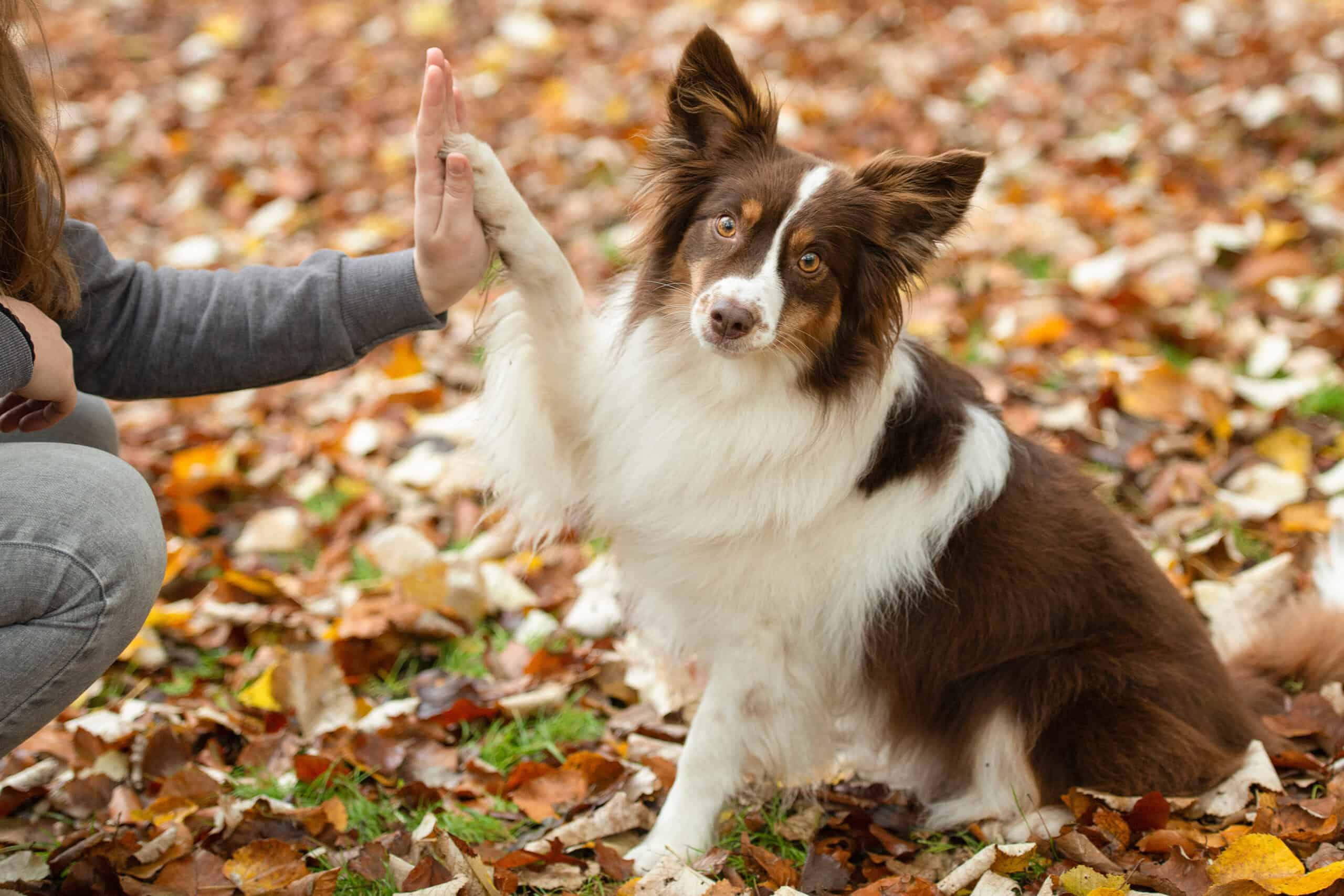When it comes to dog training, body language plays a huge role in understanding behavior. You might think that this only extends to the body language your dog is displaying, but did you know that it works the other way, too? The body language you use in interactions with your dog can have a huge influence on how they interpret what you’re actually expecting them to do.
Of course, a huge difference between human-human interactions and human-dog interactions is that humans can easily understand verbal cues (like words). Body language can still play a role in human-human interactions, but it is far more subtle. By contrast, while dogs can be trained to listen to cues and commands, your dog is likely to be far more perceptive to physical signals that you may be communicating to them through your body language.
In this article, we’re going to explore some of the main ways that we, as humans, use body language to communicate with our dogs – both intentionally and unintentionally.
Hand signals
Perhaps one of the most obvious ways that a human can communicate with a dog is through the use of hand signals. These are especially useful when training from a distance or in a location where verbal commands are drowned out. Among the most common hand signals you may use day-to-day (without even realizing it!) are:
- Using the palm of your hand pointing towards your dog, indicating them to Sit
- Using your pointer finger to indicate which direction you want a dog to travel in
- Pulling your hand towards your body repeatedly and beckoning your dog to come to you
- Stretching your arm away from your body with your hand out and fingers pointing towards the sky, indicating that the dog should Stay
- Spinning your finger around in a circle when teaching your dog how to do the Spin trick
The most important thing when using hand signals is to remain consistent and clear with your instructions. Using the same signal for different behaviors is one of the easiest ways to confuse your dog. Instead, exude consistency by pairing a hand signal with a clear verbal command so that your dog knows exactly what you expect them to do.
Posture and presence
Dogs are very perceptive to our presence – this is why it is pivotal to teach children not to loom or hover over smaller dogs when trying to pet them, as this can be perceived as a threat. Similarly, with any dog you are unfamiliar with, it is best to provide them with adequate space and then move closer so that they do not feel threatened.
If it is safe to do so, crouching down and meeting the dog at their eye level can help to reduce the perception of a threat. A confident, upright posture can demonstrate authority when working with your dog.

Facial expressions and eye contact
Eye contact is a great way to build a strong connection with your dog. It is important on both sides of the equation – not only does it reaffirm the message of your command to your dog, but it also gives them a clear indication that you are trying to communicate with them. If you have a stressed or angry complexion, your dog’s stress could increase accordingly; on the other hand, a soft, calm expression can help to confirm to your dog that you are in charge.
Movement and energy
Dogs can definitely feed off our energy – in fact, they often match it. One of the most common hurdles in obedience training (particularly for dogs with little motivation) is building the enthusiasm and desire in your dog to perform commands – and if you’re unenthused and sluggish, your dog will often adopt the same approach.
Being aware of how dogs respond to movement is also important from a safety perspective. Unexpected rapid movements can startle or excite a dog, and they may respond instinctively. Again, if you are unfamiliar with the dog, approach them calmly and do not make sudden movements (note that in some cases – such as building drive or practising runaways for a working dog – quick movements are actually part of the training process. It all depends on what you are trying to achieve when training your dog).
Consistency and timing are key
As with virtually anything in the world of dog training, consistency is going to lead to better training outcomes. If you mix and match hand signals, or are inconsistent in your expectations for your dog, it is unlikely that they will grasp the training concept you are attempting to teach them. The same applies if your verbal commands aren’t aligned with the body language or hand signals you are providing. You also need to ensure that the timing of your instructions are setting the dog up for success.
If you have questions about how your body language is impacting your dog’s behavior – or how your relationship can be improved by working on certain aspects of your body language – our team at Greenside Canine Training can help you. Reach out to us at (317) 558-9145 or email us at train@greensidecanine.com.

